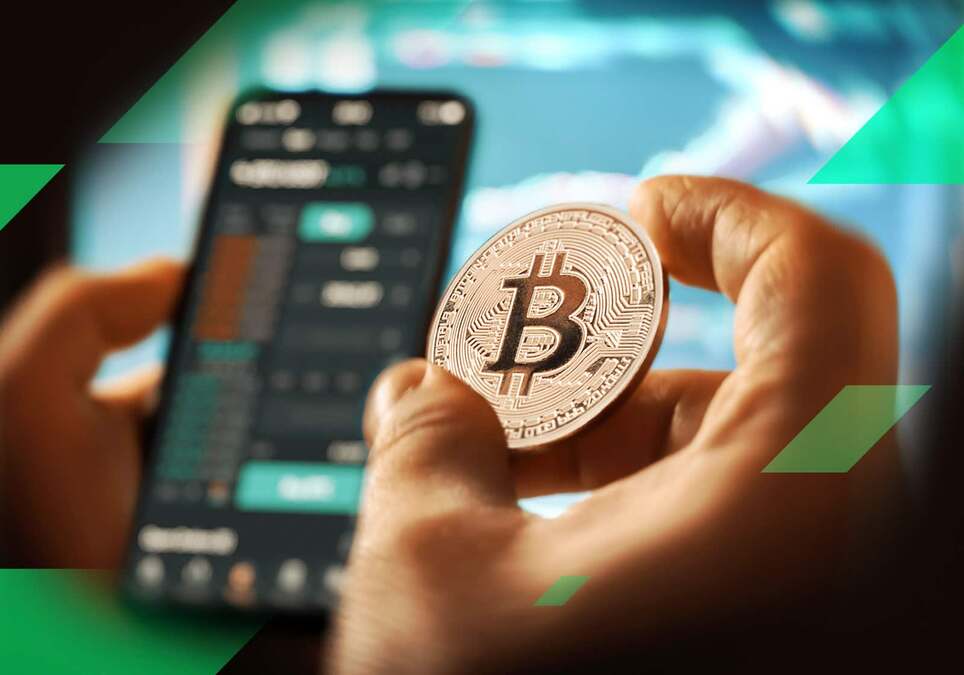Buying Cryptocurrency: The Best Easy Step-by-Step Guide for 2024

Buying Cryptocurrency As cryptocurrency continues to revolutionize the global financial landscape, more individuals are Buying Crypto cooking to invest in digital assets. With increasing interest in Bitcoin, Ethereum, and then other altcoins, it’s essential to understand how to buy cryptocurrency safely, efficiently, and then profitably. This comprehensive guide will walk you through everything you need to know, from choosing the right platform to securing your assets post-purchase.
What is Cryptocurrency?
Encryption secures the value of cryptocurrency as a type of virtual or digital money. Crypto currencies, which use blockchain technology to function on Traditional currencies are regulated by central banks, while decentralized networks differ in their mode of operation. Popular cryptocurrencies include Bitcoin (BTC), Ethereum (ETH), Ripple (XRP), and then thousands of others. People commonly use these digital assets for transactions and investments., and then in some cases, for governance in decentralized applications (dApps).
Why Should You Consider Buying Cryptocurrency?
There are numerous reasons to consider investing in cryptocurrency, including:
- Cryptos provide financial autonomy by not being controlled by a single entity, unlike fiat currencies.
- Inflation Hedge: Many investors view cryptocurrencies, especially Bitcoin, as a hedge against inflation.
- Investment Opportunities: With the right timing and then market insight, cryptos can also offer high returns on investment.
- Diverse Use Cases: Beyond trading, cryptos are used in decentralized finance (DeFi), NFTs, and then as a means of remittance across borders.
How to Buy Cryptocurrency in 2024: A Detailed Walkthrough

1. Choose the Right Cryptocurrency Exchange
The first step in buying cryptocurrency is selecting a reputable and then secure cryptocurrency exchange. Some popular exchanges include Binance, Coinbase, Kraken, and then Gemini. When choosing an exchange, consider the following factors:
- Security: Look for platforms with advanced security features such as two-factor authentication (2FA) and then cold storage.
- Fees: Transaction fees can also eat into your profits. Compare the fees across exchanges to find the best deal.
- Supported Cryptocurrencies: Ensure that the exchange supports the cryptocurrency you wish to purchase.
- User Experience: A user-friendly interface will make the buying process much smoother, especially for beginners.
2. Set Up Your Account Buying Cryptocurrency:
Once you have chosen an exchange, you will need to create an account. This usually involves:
- Verification: Most platforms require identity verification through a Know Your Customer (KYC) process, which typically involves submitting a photo ID and then proof of address.
- Enabling Security Features: Enable 2FA to add an extra layer of security to your account.
3. Fund Your Account Buying Cryptocurrency:
After setting up your account, you will need to deposit funds to buy cryptocurrency. Most exchanges allow you to deposit funds via:
- Bank Transfer: The most common method of funding your account. Note that ACH transfers may take a few days to process.
- Credit or Debit Card: Some exchanges allow you to purchase cryptocurrency using a card, though this often incurs higher fees.
- PayPal or Other e-Wallets: Select exchanges offer e-wallet options for added convenience.
4. Buy Your Cryptocurrency
Once your account is funded, you are ready to make your purchase. Follow these steps to buy your cryptocurrency:
- Select the Cryptocurrency: Decide which digital asset you want to invest in. Bitcoin is often the first choice for beginners, but Ethereum and then other altcoins offer diversification.
- Enter the Amount: Choose how much cryptocurrency you wish to buy. Many platforms allow you to purchase fractional amounts, so you don’t need to buy an entire Bitcoin or Ether.
- Place an Order: There are typically two types of orders: Market orders (buying at the current price) and Limit orders (buying when the price hits a specific point). Market orders are faster, but limit orders give you more control over the price.
5. Store Your Cryptocurrency Securely
After purchasing your cryptocurrency, the next crucial step is to secure your assets. While exchanges store your crypto in their wallets, it’s advisable to transfer it to a personal wallet for safety. Here are your options:
- Hot Wallets: These are software-based wallets connected to the internet, making them more convenient but less secure. Examples include MetaMask and Trust Wallet.
- Cold Wallets: Hardware wallets like Ledger and Trezor offer offline storage, making them much more secure against hacking attempts.
6. Monitor Your Investment
Now that you’ve bought your cryptocurrency, it’s important to keep track of your investment. Market trends can also fluctuate rapidly, so staying informed can also help you make decisions on when to buy more or sell.
Top Cryptocurrencies to Buy in 2024
Cryptocurrency markets are constantly evolving, and 2024 offers a wealth of promising digital assets. Here are some of the top cryptocurrencies to consider investing in:
1. Bitcoin (BTC) Buying Cryptocurrency:
Bitcoin remains the gold standard of cryptocurrency. As the first digital currency, it commands the largest market share and is widely regarded as a hedge against economic instability. Institutions continue to show interest in Bitcoin as a long-term store of value.
2. Ethereum (ETH)
Ethereum is the second-largest cryptocurrency by market cap and the backbone of decentralized applications. With the Ethereum 2.0 upgrade, which transitioned the network to Proof-of-Stake, Ethereum is more scalable and energy-efficient than ever before. This makes it a great investment option for those looking at the long-term potential of DeFi and dApps.
3. Solana (SOL)
Solana has emerged as a top contender in the world of smart contracts and decentralized applications. With ultra-fast transaction speeds and low fees, it’s being hailed as a potential competitor to Ethereum. Investors are particularly interested in Solana for its ability to scale while remaining affordable. Solana piques the interest of investors due to its capability to scale while keeping costs low
4. Polkadot (DOT)
Polkadot aims to create an ecosystem of interoperable blockchains, facilitating seamless communication between different networks. This innovative approach makes Polkadot a popular choice among developers and investors alike.
5. Cardano (ADA)
Cardano is known for its emphasis on Active voice: Academic research and peer-reviewed technology are emphasized by Cardano. academic research and peer-reviewed technology. With its focus on sustainability, scalability, and transparency, Cardano offers a more environmentally friendly alternative to Proof-of-Work blockchains like Bitcoin.
Understanding Cryptocurrency Risks
While the potential for profit is high, investing in cryptocurrency also comes with risks.
1. Market Volatility
Cryptocurrency prices are known for their extreme volatility. Prices can also soar or plummet dramatically within hours, which makes timing the market difficult, especially for beginners.
2. Regulatory Uncertainty
Governments across the world are still figuring out how to regulate cryptocurrencies. Changes in regulations can also have a significant impact on prices and the overall market.
3. Security Risks Buying Cryptocurrency:
While blockchain technology itself is generally secure, cryptocurrencies remain vulnerable to hacking, especially when stored in hot wallets. Investors need to take security seriously by using hardware wallets and enabling all security features offered by exchanges.
4. Scams and Fraud
The crypto world, unfortunately, attracts scammers. From Ponzi schemes to fake ICOs, investors must be cautious and avoid any deal that sounds too good to be true.
Future Trends in Cryptocurrency

The cryptocurrency market is evolving rapidly, and several trends are likely to shape its future:
1. Increased Institutional Adoption
As major companies like Tesla, MicroStrategy, and PayPal adopt Bitcoin, we expect even more institutions to follow suit. Institutional adoption could bring increased stability to the volatile market.
2. Development of Central Bank Digital Currencies (CBDCs)
Many countries are exploring central bank digital currencies (CBDCs). While these digital currencies differ from cryptocurrencies, they indicate the broader shift towards digital finance.
3. Environmental Concerns and Energy Efficiency
As concerns about Bitcoin’s energy consumption grow, more attention is being 2.0 and Cardano function as energy-efficient blockchains, where transactions are carried out. This could shift investor focus towards more sustainable options in the long run.
4. DeFi and NFTs
Decentralized Finance (DeFi) and Non-Fungible Tokens (NFTs) are rapidly expanding sectors within the cryptocurrency space. As more projects and platforms emerge, there will be greater opportunities for investors to diversify their portfolios.
Conclusion
Buying cryptocurrency in 2024 is easier and then more secure than ever before, but it’s essential to stay informed and then approach it with caution. By following the steps outlined in this guide, you can also make well-informed decisions and potentially reap the rewards of this exciting investment opportunity. As the crypto market evolves, keeping an eye on market trends and then securing your assets should remain top priorities.





